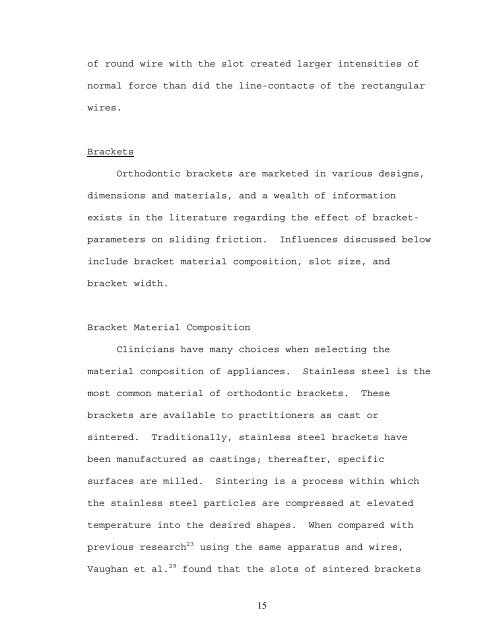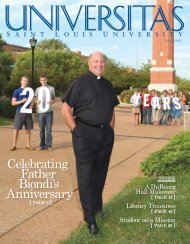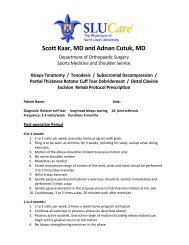The effects of third-order torque and self - Saint Louis University
The effects of third-order torque and self - Saint Louis University
The effects of third-order torque and self - Saint Louis University
You also want an ePaper? Increase the reach of your titles
YUMPU automatically turns print PDFs into web optimized ePapers that Google loves.
<strong>of</strong> round wire with the slot created larger intensities <strong>of</strong><br />
normal force than did the line-contacts <strong>of</strong> the rectangular<br />
wires.<br />
Brackets<br />
Orthodontic brackets are marketed in various designs,<br />
dimensions <strong>and</strong> materials, <strong>and</strong> a wealth <strong>of</strong> information<br />
exists in the literature regarding the effect <strong>of</strong> bracket-<br />
parameters on sliding friction. Influences discussed below<br />
include bracket material composition, slot size, <strong>and</strong><br />
bracket width.<br />
Bracket Material Composition<br />
Clinicians have many choices when selecting the<br />
material composition <strong>of</strong> appliances. Stainless steel is the<br />
most common material <strong>of</strong> orthodontic brackets. <strong>The</strong>se<br />
brackets are available to practitioners as cast or<br />
sintered. Traditionally, stainless steel brackets have<br />
been manufactured as castings; thereafter, specific<br />
surfaces are milled. Sintering is a process within which<br />
the stainless steel particles are compressed at elevated<br />
temperature into the desired shapes. When compared with<br />
previous research 23 using the same apparatus <strong>and</strong> wires,<br />
Vaughan et al. 29 found that the slots <strong>of</strong> sintered brackets<br />
15
















